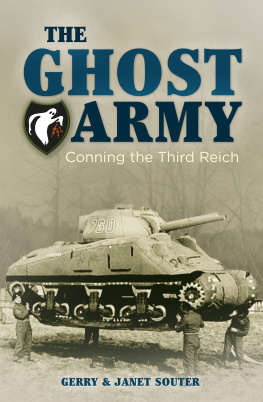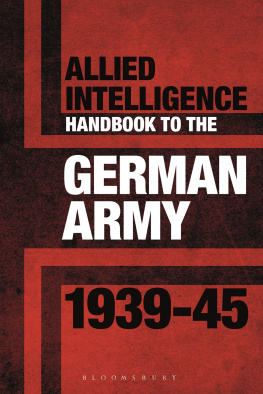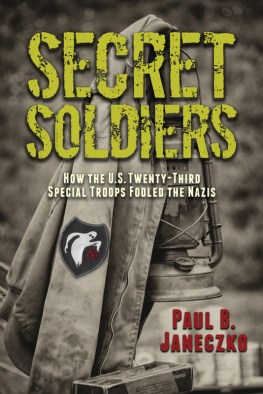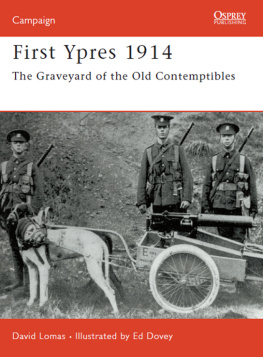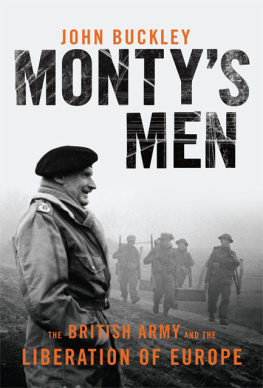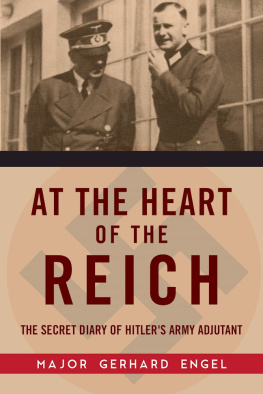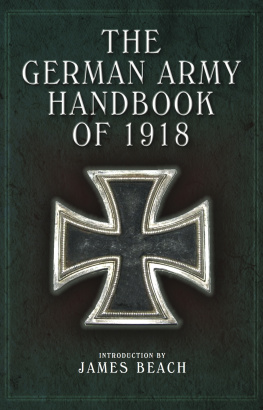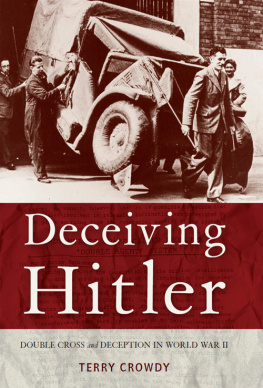
For Bernie Bluestein, 603 Engineer, Camouflage Battalion, Special, 23rd Headquarters Special Troops 19441945, whose voice in these pages puts a face on steadfast courage, and for Frederic Fox, whose incredible unit diary is a lasting tribute to the trials and triumphs of the gallant 23rd.
And after all, what is a lie?
Tis but the truth in masquerade.
George Gordon, Lord Byron (Don Juan, Canto XI)
They Brought Show Business to World War II.
Colonel Harry L. Reeder, Commanding Officer, 23rd Headquarters Special Troops
Rarely, if ever, has there been a group of such a few men, which had so great an influence on the outcome of a major military campaign.
Top-Secret U.S. Army report
Overture
The German MG 42 machine gun glowed blue-black with a soft film of dew beneath the full moon. Its muzzle pointed across a wide, deep meadow whose distant western edge ended at a dense wood that sprawled beneath a bed of lingering fog. The eastern edge of the woods facing the meadow was silent, despite the division of SS Panzer Grenadiers who crouched in the high grass among the fir trees, or peered from the hatches of their parked tanks, watching the fog. It was also silent farther back, where the woods thinned to a gentle slope and artillery crews knelt by their stock of shells in hard-edge moon shadows cast by their fearsome 88mm guns. An entire German division stood cocked and ready at the meadows edge, poised to receive an attack. They listened.
Across the meadow, the arrogant Americans made no secret of their intentions. Sherman M4 tanks creaked and rumbled down the ridge line into position. No smokescreen or fog could hide that clanking sound, the guttural bursts of acceleration, gearshift clunks and whirring turret rotation. Listening hard by the meadows edge, the Bavarian machine gunner could make out shouts in English as armour was directed to its assigned bombardment and jump-off stations. The cloying smell of petrol exhaust was on the breeze in the young Bavarians face. He could taste it on his dry lips.
All day long, and for days previously, German radio monitors had listened in as the American armoured division had built up its force: tanks, half-tracks, trucks filled with men being directed here-and-there to assembly areas, water points or quartermaster stores. Aerial surveillance by a high-flying Fieseler Storch had brought back films of indifferently camouflaged tanks, artillery and a small airstrip for light reconnaissance aircraft. The German recon plane had barely made it through the anti-aircraft fire. Civilian agents left in the village to mingle with the Americans had brought back photographs of unit shoulder patches, jeep bumper stencils and signs signs everywhere even to the latrines, where all you had to do was follow your nose. The American armoured division was exactly where it was supposed to be exactly where it was expected by the Abwehr, Germanys military intelligence bureau.
False dawn gradually turned the sky blue-grey and the MG 42 crew checked their ammunition belts for the tenth time, grabbed a bite of hoarded sausage and dark bread, checked the guns breach and exercised cramped legs. They were coming. Eyes strained over open sights to find targets, dew dripped off helmets. Where were they?
An artillery shell dropped on their left, then another. Who was shooting? The entire left flank burst into smoke and flames. The machine-gun crew looked back at the empty field, revealed now as the fog burned off. German officers were shouting! The left flank bombardment swelled with the crescendo of close combat.
The Bavarians crew began quickly dismantling the gun. A hurried fumble with ammo boxes and jingling cartridge belts, they scrambled from their dug-in position, their breath choked hot in their throats. The German gunner, cradling his slippery weapon in his arms, chanced a glance at the silent field stretching out behind him where an entire American armoured division had existed and vanished and reappeared miles away on his left flank. He was running now, trying to catch up to his crew. He left the phantoms behind but kept glancing over his shoulder.
Introduction
To Be or Not to Be Deception Asks a Question
Every nation that faced Adolf Hitlers army encountered a well-honed and battle-tested military machine. Constructed from the ashes of its World War I predecessor it was enveloped by an edge of fanaticism, whose political leaders were not averse to genocide and treachery in their pursuit of European dominance. As unprepared western nations faced its superior organization and will, implacable and devoid of empathy, they were pummelled into submission. It became obvious that an edge was needed to attack the twisted minds of the warlords who had built and steered this juggernaut. Its progress had to be slowed and misdirected. Time had to be purchased with guile and stealth. The free world weaponized its intellect and sent it off to war.
The critical edge proved to be deception, seasoned with a flair for the tactically theatrical. As the first German guns and bombs detonated, recovery began with the people of the British Isles. Their centuries-long experience of many forms of warfare had left them open to creative solutions on the battlefield, including imaginary and speculative deceits. Camouflage and duplicity with a dash of stagecraft would baffle the Germans and save thousands of lives in campaigns from North Africa and the Mediterranean to the invasion of Europe and onward into the very heart of Hitlers Third Reich.
Following victories in North Africa and the Mediterranean, the Allied armies used the British island fortress as the springboard to stage their attack on the European Theatre of Operations (ETO). They faced their most difficult challenge in hoodwinking the German High Command. To the complex menu of acronyms and code-names OVERLORD, NEPTUNE, FORTITUDE, QUICKSILVER and FUSAG they added an extra level of deceit. As the German commanders ensconced in their bunkers confidently expected a Gtterdmmerung, the complete destruction of the Allies, the deceivers delivered instead a phantom invasion and a Ghost Army.
On 6 June 1944, Hitlers generals and intelligence chiefs scanned the coastline of Norway and the Pas-de-Calais for signs of the promised Allied invasion. Yet where were the landing craft that had dotted the British coast, rivers and estuaries? Where were the squadrons of bombers above the Atlantic Wall around Calais? Where was General Pattons hard-charging First United States Army Group?
The German High Command was confident. The flow of information from Abwehr agents and spies, and from aerial cameras overflying Britain had been constant and verified. The Nazi spy networks observations had confirmed the German generals decisions. They deployed their Panzer armour and veteran battalions to precisely where the phantom illusionists had directed them, far from Normandy, the main combat arena.
Taken in by the Allied deceptions, Adolf Hitler had ordained that the Normandy invasion was a feint, a raid, a mere sideshow to suck in his precious reserves and drag his armies from their invincible concrete bunkers in the Pas-de-Calais. Even the most acute of German commanders, Field Marshal Erwin Rommel the Desert Fox was sufficiently taken in to spend 6 June the very day of the Allied landings in Normandy celebrating his wifes birthday at his home, the Villa Lindenhof in Baden-Wrttemberg, Germany.
The first act of the Allies European campaign successfully battered its way across the sands of Normandy with grim, but acceptable results. The second and third acts pushed across France and the Low Countries until the final denouement at the banks of the River Rhine. Accompanying the Allied soldiers surging eastward across the European theatre of operations, was a small band of thespians, jesters, mountebanks and conjurers. These warrior wizards and master illusionists comprised the American 23rd Headquarters Specialty Troops, a 1,100-man composite command capable of successfully impersonating actual battalions, corps and whole armies. This was the Ghost Army.
Next page
